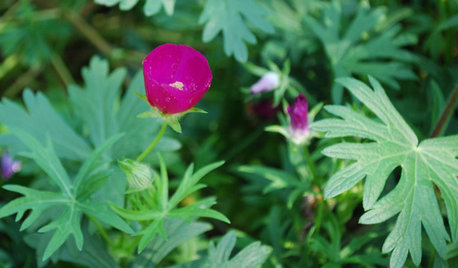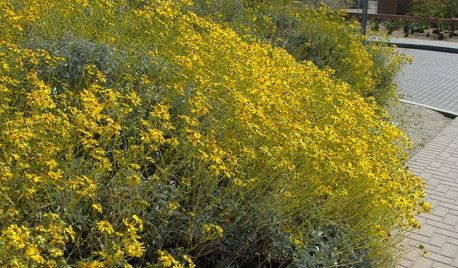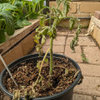Yellow leaves/black spotting on Pink Oxhearts
Greg1964
18 years ago
Related Stories

MOST POPULARHomeowners Give the Pink Sink Some Love
When it comes to pastel sinks in a vintage bath, some people love ’em and leave ’em. Would you?
Full Story

GARDENING GUIDESGreat Design Plant: Callirhoe Involucrata Wakes Up Hot Garden Spots
Give a dry and sunny garden a jolt of violet-pink color summer to fall — and watch bees and butterflies flock to the nectar
Full Story
GARDENING FOR BUTTERFLIESGreat Design Plant: Red Yucca Spikes Dry Spots With Color
Neither heat nor cold nor lack of water fazes this flowering succulent, which adds spiky texture to Southwestern landscapes
Full Story
GARDENING GUIDESGreat Design Plant: Brittlebush Brightens Rocky, Dry Spots
Masses of cheerful golden flowers belie the tough nature of this highly drought-tolerant shrub
Full Story
GARDENING GUIDESWhat's Wrong With My Plant? Leaves Often Hold the Clues
Learn how to identify common plant ailments by reading their leaves
Full Story
REMODELING GUIDESInterior Brick: Paint it or Leave It?
Here's how to know if covering that brick is a sin or solution
Full Story
FALL GARDENING5 Ways to Put Fall Leaves to Work in Your Garden
Improve your soil and yard the organic way with a valuable garden booster that grows on trees
Full Story
LAUNDRY ROOMSRoom of the Day: The Laundry Room No One Wants to Leave
The Hardworking Home: Ocean views, vaulted ceilings and extensive counter and storage space make this hub a joy to work in
Full Story
ARCHITECTUREStates of Style: Alabama’s Icons Leave Their Mark
In the first of a new series, discover the natural beauty, the architectural icons and some of our favorite homes deep in the heart of Dixie
Full Story






carolyn137
nctom
Related Professionals
Benbrook Landscape Architects & Landscape Designers · Deer Park Landscape Architects & Landscape Designers · Peabody Landscape Contractors · Clayton Landscape Contractors · Cornelius Landscape Contractors · Fair Oaks Landscape Contractors · Mequon Landscape Contractors · Placerville Landscape Contractors · Ronkonkoma Landscape Contractors · Thornton Landscape Contractors · Waterford Landscape Contractors · West Coon Rapids Landscape Contractors · Sacramento Siding & Exteriors · Wayne Siding & Exteriors · Menomonee Falls Siding & ExteriorsGreg1964Original Author
carolyn137